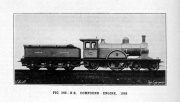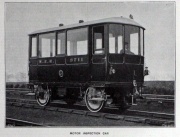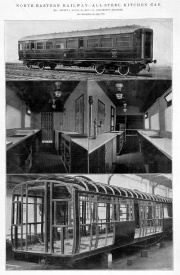North Eastern Railway





of York
of Gateshead Works, York Works
The North Eastern Railway (NER), unlike many other of the pre-Grouping companies, had a relatively compact territory, having the district it covered to itself. That district extended through Yorkshire, Durham and Northumberland, with outposts in Westmorland and Cumberland. [1]
It formed the middle link between London and Edinburgh, joining the Great Northern Railway near Doncaster and the North British Railway at Berwick-upon-Tweed.
1854 Incorporation took place. The constituent parts of the NER were:
- York, Newcastle and Berwick Railway 1854
- York and North Midland Railway 1854
- Leeds Northern Railway 1854
- Malton and Driffield Railway 1854
- York and North Midland Railway 1862
- South Durham and Lancashire Union Railway 1862
- Stockton and Darlington Railway 1863
- West Hartlepool Railway 1865
Thomas Elliot Harrison was appointed chief engineer.
York station (York) was the hub of the system, and the headquarters of the line was located here.
From 1860 the NER was a partner (with the North British Railway and the Great Northern Railway) in the East Coast Joint Stock operation.
1877 The basis for the present York station was opened on June 25. Until the advent of modern signalling, the 295-lever box was the largest manually-worked signal box in Britain.
Newcastle Central station (Newcastle) (which had opened on August 29 1850) became the largest on the NER. Other principal stations were located at Sunderland, Darlington and Hull. The station at Leeds was a joint undertaking with the London and North Western Railway.
1875 See 1875 Number of Locomotives where the NER are listed second with 1,331 locomotives.
1888 See Locomotive Stock June 1888 where the NER are listed second with 1,506 locomotives.
1888 Thomas Harrison died.
1891 George Gibb was appointed as general manager
c.1904 The NER was the first main line rail company in Britain to adopt electric traction (the Lancashire and Yorkshire Railway followed about one week later). The lines converted were known as Tyneside Electrics:
- Newcastle Central via Wallsend and Whitley Bay to Gosforth
- Newcastle Central to Benton
- the Riverside Loop from Byker to Percy Main.
1913-16 Electrification of the Shildon-Newport line. The LNER electrified further lines in 1938.
1908 The company owned 1,650 miles of lines. [2]
The NER carried a larger tonnage of mineral and coal traffic than any other principal railway.
The NER was the first railway company in the world to appoint a full-time salaried architect to work with its chief engineer in constructing railway facilities. Some of the men appointed were based in, or active in, Darlington.
- Thomas Prosser held the position from 1854 to 1873. He worked in Newcastle
- Benjamin Burleigh, died after only two years in post.
- William Peachey who followed Burleigh for an equally brief period of office, was based in Darlington.
- William Bell worked for the NER for fifty years and was chief architect between 1877 and 1914.
- Arthur Pollard was in post briefly
- Stephen Wilkinson then filled the position of chief architect briefly, before the merger of 1923 into the LNER led to the abolition of the department.
The company owned the following docks:
- Hull Docks: acquired 1893. Dealt with a large variety of cargoes, including grain, seed and fruit
- Hartlepool Docks: acquired 1865. A large timber trade
- Tyne Dock: opened by NER in 1859. Timber and coal exports
- Middlesbrough Dock: Opened in 1842. Iron and steel exports; and a world-wide trade in other goods.
The NER also owned coal-shipping staithes at Blyth and Dunston-on-Tyne.
1920 Sir Alexander Kaye Butterworth was general manager. [3]
1923 It was absorbed into the London and North Eastern Railway at the Grouping in 1923
- See also The North Eastern Railway from One Hundred Years of British Railways in The Engineer at No I North Eastern Railway - The Engineer 1924/10/31













































































